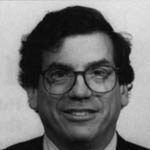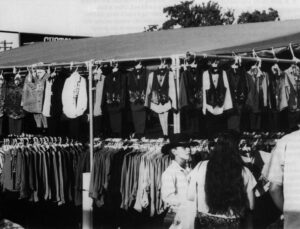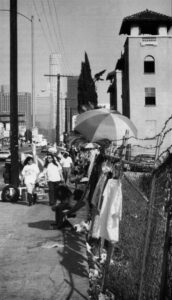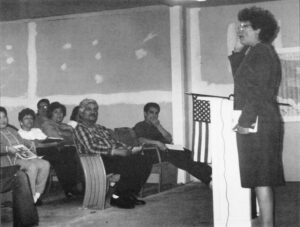Roberto Suro
- 1993

Fellowship Title:
- Redefining America in the Barrios
Fellowship Year:
- 1993
Traveling for a family: The Remittance Economy
According to the inscription on the Statue of Liberty, immigrants are the “tired… poor… the huddled masses yearning to be free, the wretched refuse of your teeming shore… the homeless, tempest-tossed.” Unfortunately, those words did not fit when Emma Lazarus wrote them in 1883, and they are even less accurate today. Despite the myths of immigration, the poorest of the poor, the most downtrodden and persecuted did not come to the United States during the last great wave of immigration. Things are not much different today. The tempest-tossed were, and still are, just that. They are at the mercy of forces beyond their control. It is the others, the ones battling the storms, who end up taking trips. Immigrants are the ones who set their own course undaunted by the tempests. Throughout American history migrant streams have transported people with the means and ability to decide their own destinies. Why aren’t very poor people the most likely to migrate? If not the poorest, then who does come? Some answers emerge from several extensive surveys conducted

Houston Dollars Fuel The Human Traffic from Guatemala
One morning in September, 1978 Juan L. Chanax set out from his village in the Guatemalan highlands of Totonicapan and began a voyage with consequences still unfolding in unimaginable ways. A weaver’s son and a good weaver himself, Juan made one of the few decisions allowed to ordinary men that can change the history of nations. He decided to move. Juan Chanax, 37, is one of the linchpins of a Guatemala-Texas migration that revolves around work in some 40 grocery stores in the Houston area. Chanax waded across the Rio Grande 15 years ago and now is a symbol of success and stability in both his new and native homes. (Photo by APF Fellow Roberto Suro) He sold his looms for a few hundred dollars and with just a small valise in hand he headed north. Juan did not know anyone who had actually made the trip to the United States although he had heard talk about the good money to be made here. He ended up in Houston eventually where he found work mopping

Immigration to the Burn Zone: The Changing Face of the American City
Photos and article by APF Fellow Roberto Suro LOS ANGELES — During Los Angeles’ days of fury in spring,1992, the sounds of gun fire and helicopters reminded Elsa Flores why she had left El Salvador more than a decade earlier and made her wonder what she had accomplished by coming here. More than a year after the Los Angeles riots, street vendors ply their wares in the shadow of the city’s downtown. As the rioting flared all around her home in South Central,Mrs. Flores bundled her family into a back room of their little bungalow, and from this refuge they watched the mayhem outside on television. On the second day of the disturbances she saw something familiar on the TV, and putting the helicopter shot in perspective she realized the building that housed her small clothing business was on fire. “I watched and held my daughters,” said Mrs. Flores, who had worked nine years as a salesclerk, eventually saving enough money to put up her own stall at one of the big indoor flea

Adding Up The Latino Fractions
Alice Salazar worries about the changes that newcomers are bringing to the Houston neighborhood her family has called home since the turn of the century when her grandparents immigrated from Mexico. “This place is full of fly-by-night people now,” she said speaking English with a distinct Texas twang. “They’ve been dropped off by the bus and are waiting for someplace else to go. And while they’re here, they just act like they were still in Mexico, not taking care of anything, putting garbage wherever they feel like it. No wonder the place is deteriorating.” Mrs. Salazar’s neighborhood, called Magnolia, has steadily attracted Mexican immigrants since the first docks and factories were built nearby in the 1900’s but never have so many come as in recent years. The staid blue-collar community Mrs. Salazar knew as a child has become an impoverished, bustling port of entry. It has been a difficult adjustment for people like Mrs. Salazar. Yet despite her occasional outbursts of disparagement, Mrs. Salazar spends hours a week selling cookies and raffle tickets at a
